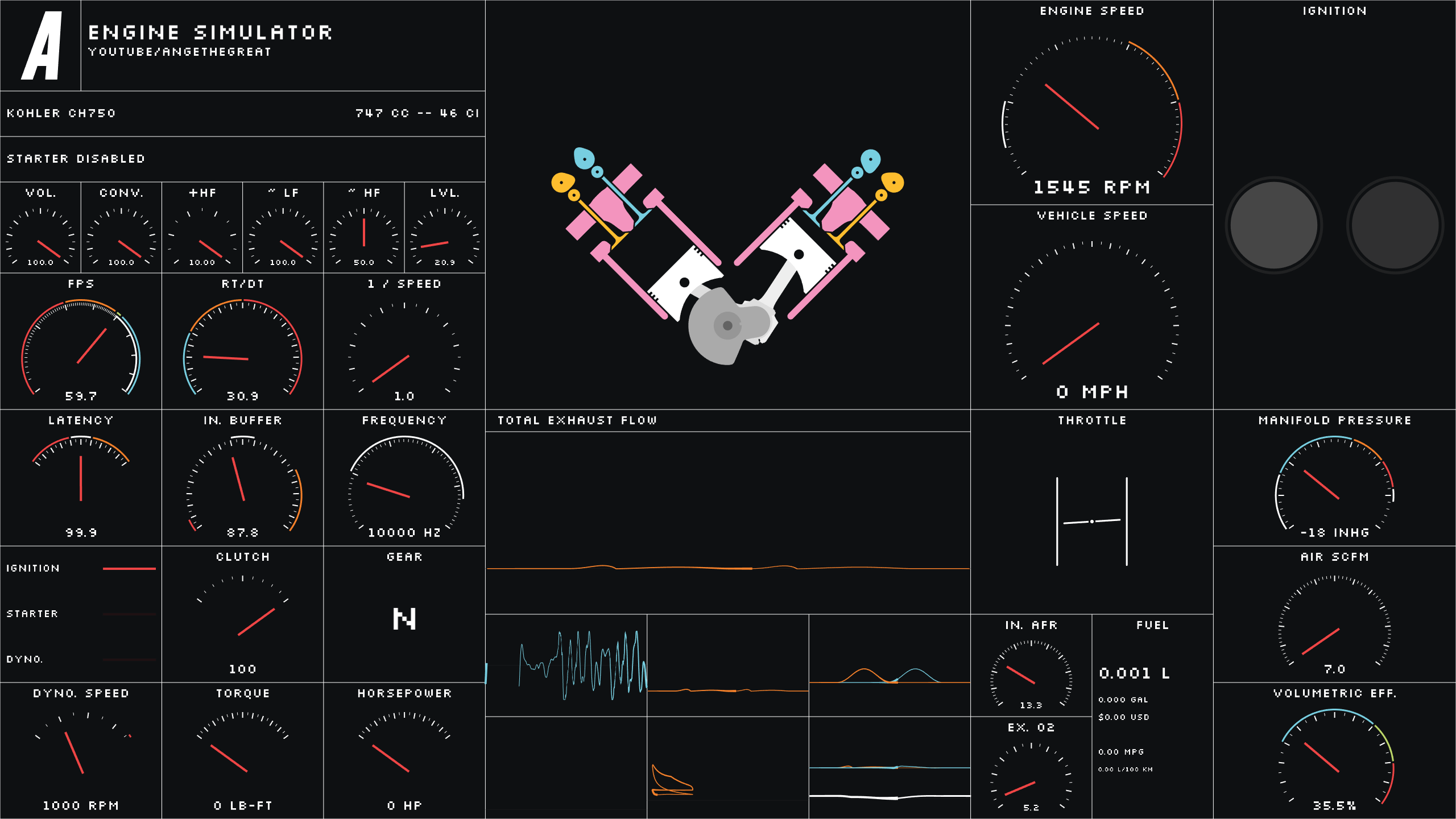Engine Simulator
Warning: project is in development and will change frequently
What is this?
This is a real-time internal combustion engine simulation designed specifically to produce engine audio and simulate engine response characteristics. It is NOT a scientific tool and cannot be expected to provide accurate figures for the purposes of engineering or engine tuning.
How do I install it?
This is a code repository and might not look like other software that you're used to downloading and installing (if you're not familiar with programming). To download a ready-to-use version of the application, navigate to the releases page, find the most recent release (ex. v0.1.5a), click "Assets" and download the .zip file with a name that starts with engine-sim-build. Unzip this file, then run bin/engine-sim-app.exe. The simulator should then start normally.
Check out our Frequently Asked Questions if you need more details.
How do I use it?
The UI is extremely minimalistic and there are only a few controls used to interact with the engine:
| Key/Input | Action |
|---|---|
| A | Toggle ignition |
| S | Hold for starter |
| D | Enable dyno |
| H | Enable RPM hold (see below for instructions) |
| G + Scroll | Change hold speed |
| F | Enter fullscreen mode |
| I | Display dyno stats in the information panel |
| Shift | Clutch (hold spacebar to slowly engage/disengage) |
| Up Arrow | Up Gear |
| Down Arrow | Down Gear |
| Z + Scroll | Volume |
| X + Scroll | Convolution Level |
| C + Scroll | High frequency gain |
| V + Scroll | Low frequency noise |
| B + Scroll | High frequency noise |
| N + Scroll | Simulation frequency |
| M | Increase View Layer |
| , | Decrease View Layer |
| Escape | Exit the program |
| Q, W, E, R | Change throttle position |
| Space + Scroll | Fine throttle adjustment |
| 1, 2, 3, 4, 5 | Simulation time warp |
| Tab | Change screen |
Using the RPM hold
The RPM hold feature will hold the engine at a specific RPM and also measure the engine's horsepower and torque at that RPM. You can enable RPM hold by pressing the H key. You must then enable the dynomometer (press the D key) in order for the RPM hold to take effect. To change the hold speed, hold the G key and scroll with the mouse wheel. The RPM hold will be shown on the DYNO. SPEED gauge in the lower left of the screen.
Why is the code so sloppy?
I wrote this to demo in a YouTube video, not as a real product. If you would like it to become a usable product please reach out to me or join my Discord (link can be found in the description of the aforementioned YouTube video). I use this codebase for my own purposes and so it might change frequently and without warning.
How do I build it? (Ignore this section if you're not a developer!)
Note: this project currently only builds on Windows!
Step 1 - Clone the repository
git clone --recurse-submodules https://github.com/ange-yaghi/engine-sim
Step 2 - Install CMake
Install the latest version of CMake here if it's not already installed.
Step 3 - Install Dependencies
You will need to install the following dependencies and CMake will need to be able to locate them (ie. they need to be listed on your PATH):
1. SDL2
2. SDL2_image
3. Boost (make sure to build the optional dependencies)
4. Flex and Bison
Step 4 - Build and Run
From the root directory of the project, run the following commands:
mkdir build
cd build
cmake ..
cmake --build .
If these steps are successful, a Visual Studio solution will be generated in build. You can open this project with Visual Studio and then run the engine-sim-app project. If you encounter an error telling you that you're missing DLLs, you will have to copy those DLLs to your EXE's directory.
